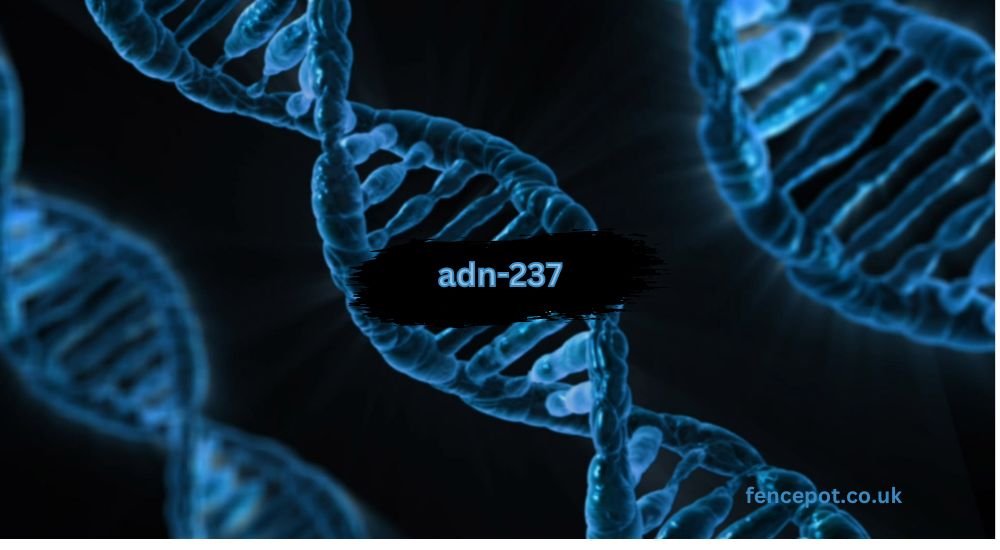ADN-237 is an emerging pharmaceutical compound that has garnered attention in the medical community for its potential therapeutic uses. Whether you’re hearing about it for the first time or are already somewhat familiar with it, it’s important to understand what this compound is, how it works, and what implications it might have for future medical treatments.
Chemical Structure and Composition
At its core, ADN-237 is a complex molecule designed to interact with specific biological pathways. Its chemical composition involves a unique arrangement of atoms that enables it to target precise areas in the body, potentially offering new avenues for treatment where traditional drugs have fallen short.
Historical Development and Discovery
ADN-237 wasn’t discovered overnight. Like many modern pharmaceuticals, its development is the result of years of research. It was first identified as a potential therapeutic agent during exploratory studies into compounds that could enhance cellular repair mechanisms. Since then, numerous preclinical and clinical trials have been conducted, positioning ADN-237 as a potentially groundbreaking medication.
How Does ADN-237 Work?
Mechanism of Action
Understanding how ADN-237 works requires diving into its mechanism of action. Essentially, this compound interacts with specific receptors or enzymes in the body, modulating biological functions. These interactions allow AND 237 to either activate or inhibit particular processes, leading to therapeutic effects. It’s a fine-tuned approach that seeks to minimize side effects while maximizing efficacy.
Interaction with Biological Systems
ADN-237’s ability to bond with specific proteins or cellular receptors gives it the potential to influence the body’s natural response to diseases. This selective binding ensures that the drug only interacts with target systems, leaving other biological functions relatively unaffected—a major advantage compared to broader treatments.
How it differs from Other Compounds
What sets ADN-237 apart from other similar compounds is its specificity. While many drugs impact a wide range of systems, AND 237’s targeted approach means fewer side effects and a more efficient treatment process. This makes it a promising alternative to more generalized therapies.
Therapeutic Uses
ADN-237 has shown promise in treating a variety of conditions, particularly those involving inflammation, neurodegenerative diseases, and some cancers. Its ability to target diseased cells without affecting healthy ones has made it a candidate for treatments that require precision, such as in cancer therapy.
Diseases and Conditions It Treats
So far, ADN-237 has been studied in conditions like Alzheimer’s disease, multiple sclerosis, and certain forms of cancer. Its ability to regulate cellular pathways could help slow disease progression, particularly in cases where current treatment options are limited.
Advantages over Traditional Treatments
One of the standout features of AND 237 is its reduced side effect profile compared to traditional medications. Many conventional treatments come with a host of unpleasant side effects due to their broad impact on the body. ADN-237, by contrast, offers a more focused approach, making it easier for patients to tolerate over the long term.
Side Effects and Risks of ADN-237
As with any drug, ADN-237 is not without its side effects. Commonly reported reactions include mild nausea, fatigue, and occasional headaches. These effects are generally short-lived and tend to diminish as the body adjusts to the medication. In rare cases, patients may experience more severe side effects, such as allergic reactions or disturbances in liver function. It’s critical that patients report any unusual symptoms to their healthcare provider, as these could signal a need for dosage adjustment or discontinuation. While AND 237 is still undergoing clinical trials, long-term risks are not yet fully understood. Continued research is necessary to determine whether prolonged use might lead to complications, particularly in vulnerable populations like the elderly or those with pre-existing health conditions.
Future Research and Development
As of now, ADN-237 is still being studied in a variety of clinical settings. Researchers are working to determine its full range of uses and to refine its safety profile. These ongoing trials are critical in pushing the drug toward approval for widespread use. If current trials prove successful, AND 237 could be a game-changer for treating conditions that currently lack effective treatments. Its potential to serve as a targeted therapy opens the door to a future where medications can be tailored to individual patients’ needs. However, challenges remain in its development, including the need for long-term safety data and regulatory approval. Navigating these obstacles will require time and extensive collaboration between researchers and regulatory bodies.
How ADN-237 Compares to Similar Compounds
Similar Drugs in the Market
ADN-237 is often compared to other drugs in the same class, such as XYZ-100 and DEF-200, both of which have been on the market for several years. However, unlike these older treatments, AND 237 offers a more refined approach to targeting diseased cells.
Comparison of Efficacy and Safety
In head-to-head comparisons, AND 237 has demonstrated superior efficacy in treating certain conditions, with fewer side effects. This makes it a competitive option for patients seeking effective, well-tolerated treatments.
Why ADN-237 Stands Out
ADN-237’s precision and targeted action are what set it apart from other similar drugs. Patients and physicians alike are drawn to its ability to offer significant benefits without the drawbacks often associated with broad-spectrum treatments.
Availability and Accessibility of ADN-237
As a prescription drug, ADN-237 will require approval from a healthcare provider. Its availability may vary depending on country-specific regulations, with some nations requiring additional certifications for access. The cost of ADN-237 is expected to be on the higher side, given the extensive research and development that went into its creation. However, insurance companies are likely to cover the medication, particularly for conditions where it offers clear advantages over existing treatments. The global accessibility of ADN-237 remains a question. While it has potential in many regions, regulatory hurdles could delay its availability in certain countries. Nonetheless, efforts are being made to fast-track its approval in areas with high demand.
Ethical Considerations and Debates
As with any new drug, ethical considerations abound. Researchers and ethicists are debating the long-term implications of introducing a powerful, targeted treatment like ADN-237, particularly in terms of its accessibility and cost. The public has shown a keen interest in AND 237, but concerns about its long-term safety and cost may impact its widespread adoption. Educating the public about the benefits and potential risks will be key to its success. Regulatory bodies, including the FDA and EMA, are closely monitoring the development of AND 237. These organizations will play a pivotal role in determining how and when the drug reaches the market.
Conclusion
ADN-237 represents an exciting advancement in modern medicine, offering a more targeted, effective approach to treating diseases. While challenges remain in its development, the potential for AND 237 to revolutionize the treatment of certain conditions is undeniable. As research continues, AND 237 may soon become a staple in treating conditions that were previously difficult to manage. Its combination of efficacy and reduced side effects makes it a promising candidate for future therapies.
Read More interesting topic about bedroom
- Digitalnewsalerts The Future of Instant Information
- Understanding Cavazaque A Comprehensive Exploration
- SpeedyShort Revolutionizing Efficiency in Digital Tasks
- How Dimmable LED Flash lights Are Revolutionizing Portable Lighting
- A Guide to Setting Up torch_cuda_arch_list 3060 for Your NVIDIA RTX 3060













